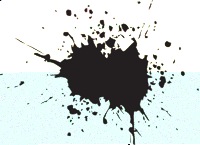Stain
Origin
Middle English steynen, partly from Anglo-French desteindre to take away the color from & partly of Scandinavian origin; akin to Old Norse steina to paint
Definitions
- b : to bring discredit on <the scandal stained his reputation>
- 4: to color (as wood, glass, or cloth) by processes affecting chemically or otherwise the material itself
Description
A stain is a discoloration that can be clearly distinguished from the surface, material, or medium it is found upon. Stains are caused by the chemical or physical interaction of two dissimilar materials. Stains are used intentionally in a variety of fields, including in research (biochemical staining), technology (metal staining), and art (wood staining, stained glass.)
There can be intentional stains (such as wood stains or paint), indicative stains (like food coloring or adding a substance to make bacteria visible under a microscope), natural stains (such as rust on iron or a patina on bronze), and accidental stains (like spilling ketchup on your shirt). While the types of stains are very different in application, they all form in the same basic ways:
The primary method of stain formation is surface stains, where the staining substance is spilled out onto the surface or material and is trapped in the fibers, pores, indentations or other capillary structure of that surface.[1] The material that is trapped coats the underlying material, and the stain reflects back light according to its own color. Applying paint, spilled food, and wood stains are of this nature.
A secondary method of stain involves a chemical or molecular reaction between the material and the staining material. Many types of natural stains fall into this category. Finally, there can also be molecular attraction between the material and the staining material, involving being held in a covalent bond and showing the color of the bound substance.
Different types of material can be stained by different substances, and stain resistance is an important characteristic in modern textile engineering.
In many cases, stains can be affected by heat , and may become reactive enough to bond with the underlying material. Extreme heat, such as from ironing or dry cleaning, can cause a chemical reaction on an otherwise removable stain, turning it into a chemical compound that is impossible to remove.
Various laundry techniques exist to attempt to remove or minimize existing stains, and stain removers are an important type of chemical in laundry detergents. Some stand-alone stain removers also exist.
